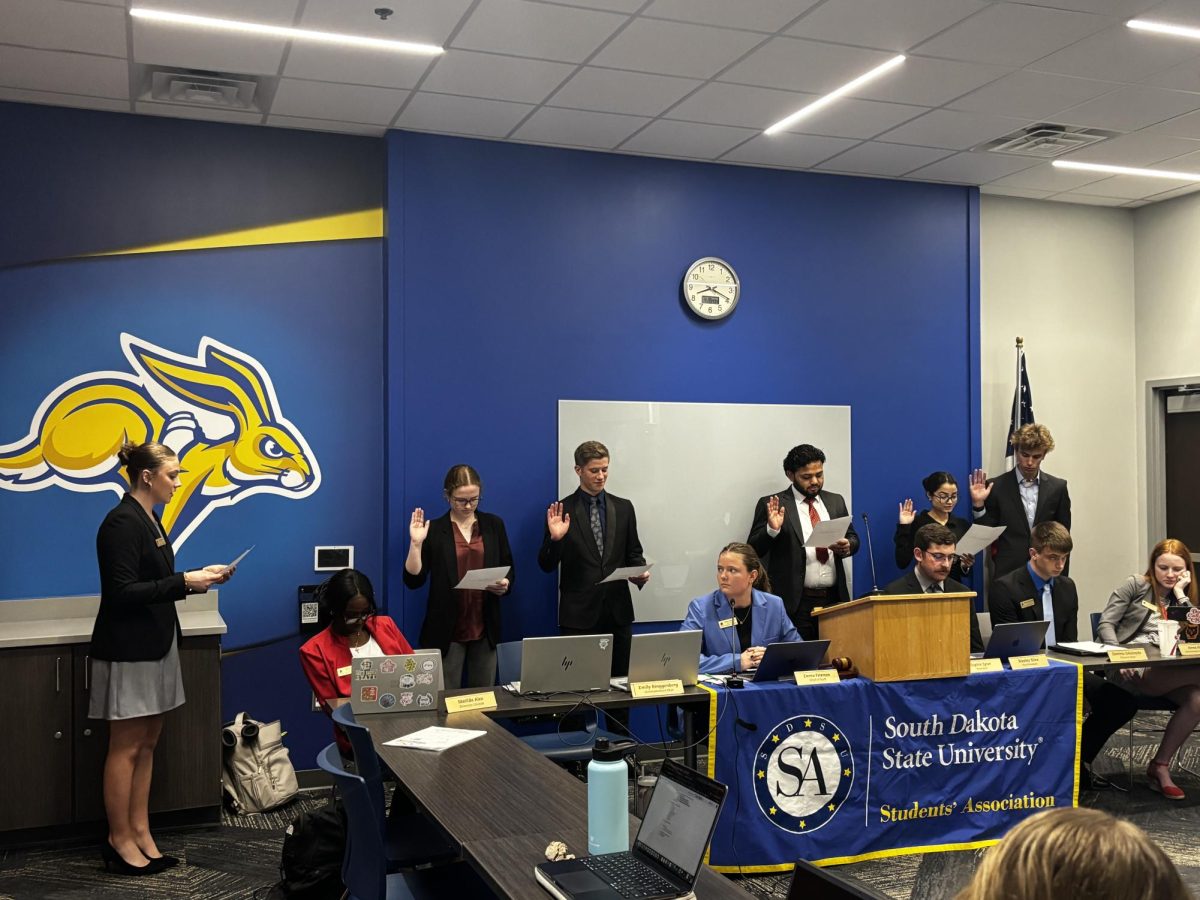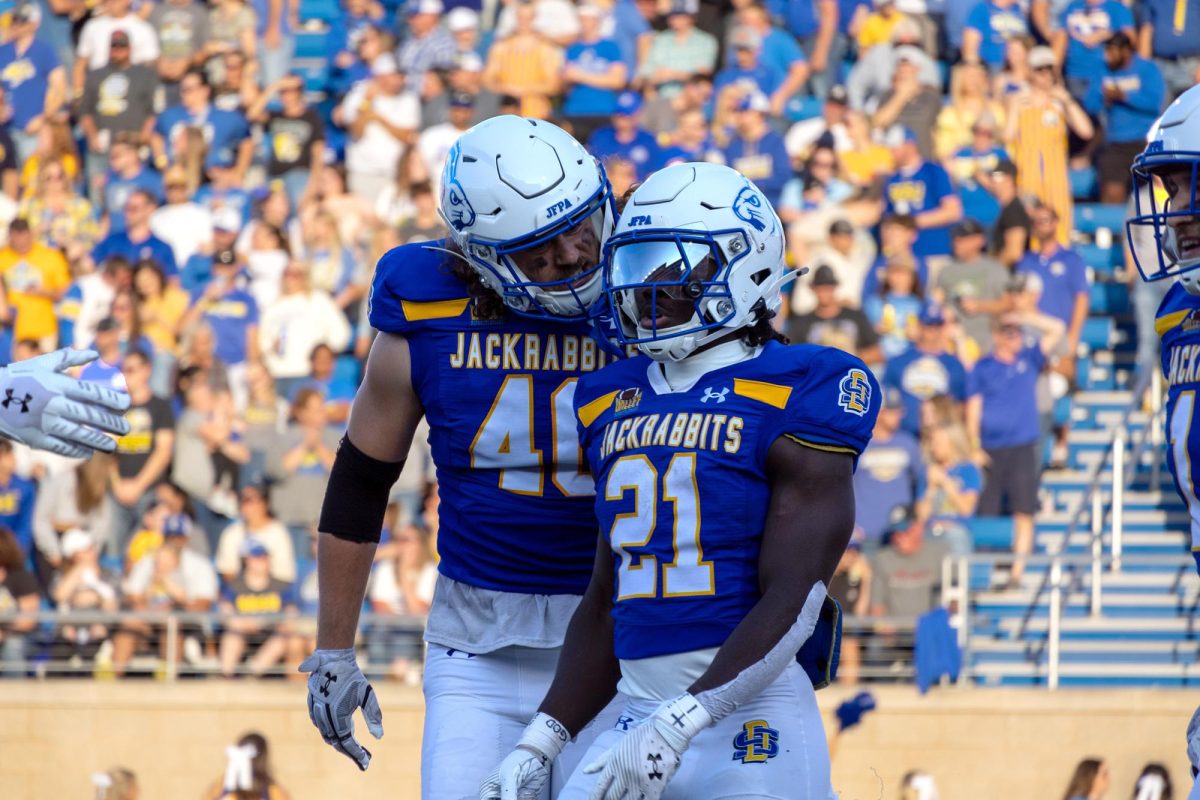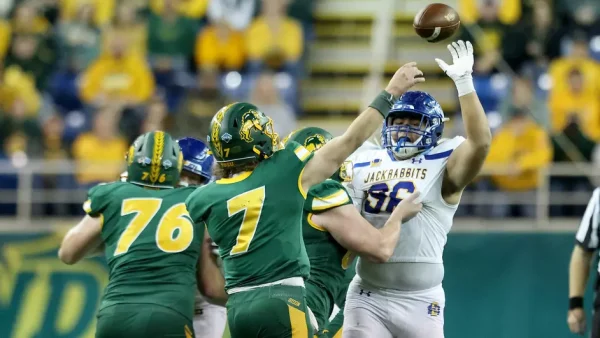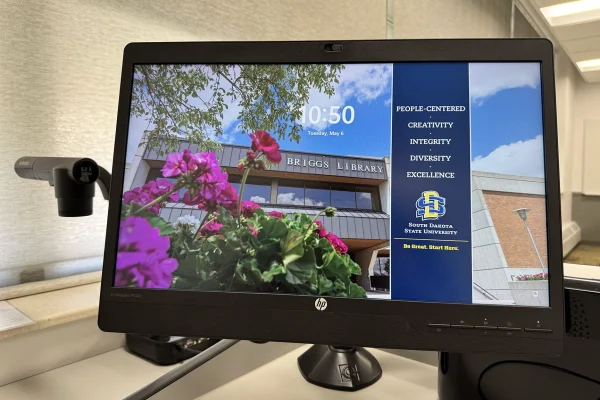Hockey players compete play for love of the game
January 20, 2009
Chris Mangan
Every weekend, there are dozens of SDSU students doing something they love – playing sports. No, these are not your typical scholarship athletes that play for the football and basketball teams; these are members of club sports.
The men’s and women’s hockey teams are no different from the basketball and football teams at SDSU; they are there because they love the sport. Hockey does vary, though. Since it is the student’s choice to play and since they have to pay to play, the school works with their schedule.
“It is fun to be a part of a club,” senior forward Brian Hermanson said. “It is fun to get to play a sport in college and represent the school and travel to play other schools. We don’t have to lift or do off ice training. We have to pay money to get to play. If you have an exam that you need to study for, you don’t have to go to practice. We are pretty flexible because school comes first.”
Hockey is the most expensive club sport when you add up ice time, which is $100 a hour for the team, and travel expenses. While both men’s and women’s hockey teams get a portion of the money from the school, they still have to charge $125 for men and $150 for women per semester to play. They also do multiple fundraising activities, ranging from selling shirts to selling concessions and cleaning up after men’s and women’s basketball games each year. A few years ago, the women’s team used the money from the school to purchase new jerseys, with the fundraising money going towards paying referees, ice time and travel expenses.
“The school does give us money every year,” Andi Ribstein, a defender on the women’s team said. “Each year is different because we have to share with the other club sports. We fundraise more than we practice it seems like. We have to fundraise every year and are always looking for more opportunities.”
While members of both teams are playing because they love the game, they still face problems. Money is the biggest problem, as some members of the teams cannot pay the fees or are not able to pay the fees on time. The coach for the women’s team is a volunteer, and since the players paid to be part of the team, they are not happy when they do not get to play.
“The typical girl fights tend to happen like any other team,” Ribstein said.
Paper work also needs to be filled out and submitted to the American Collegiate Hockey Association on time. The task is left up to the three or four officers, and it “can get very time consuming,” Hermanson said.
But it all boils down to money, keeping the finances under control and finding a coach that will want to do the work for little to no money.
“We have potential to be a really good team this year, but it is hard to find a good coach around,” Hermanson said. “We lack some of the structure that other teams have, and that helps to win some games. We have lost games that we shouldn’t have.”
Most of the players went to school in South Dakota or Minnesota, so they are familiar with each other and what they bring to the table. That camaraderie has carried off the ice, where Ribstein said she has “made lifelong friends.” Both Hermanson and Ribstein said that familiarity with the members of the team has made the team better.
“If I would have gone to another school, hockey wouldn’t have been as much fun if my old friends weren’t there to play with me,” Ribstein said. “Playing with old friends while making new ones is what I wanted.”
While hockey may be considered a club sport, the players on both teams are playing for one reason – they love hockey and want to have fun.
“The guys on the team weren’t given a scholarship. They just want to play,” Hermanson said. “We are definitely going out to win every game, but obviously, that doesn’t happen. We are not punished for losing, and we go hang out after the games in the motels or at someone’s house. This year especially, we play a lot better when we are having fun. We take it seriously, but not to the point where nobody is having fun.”





















